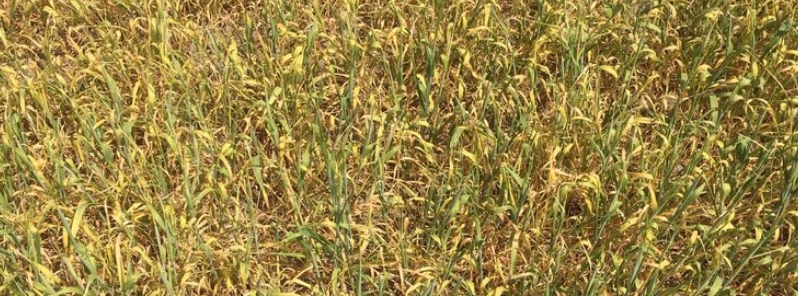Ireland’s total grain output in 2020 to drop by 100 million euros after driest spring since 1847

The total output from the grain sector in Ireland this year is expected to drop by at least 100 million euros due to prolonged drought. According to semi-state research authority Teagasc, the overall output will decline from the usual 2.3 million tonnes to under 1.9 million.
The drought has severely impacted crops in the eastern half of Ireland, the agency pointed out, adding that straw yields are predicted to reduce by almost 25 percent.
Teagasc also said that 1.6 million fewer straw bales will be available in the country this year. Many of these farmers are already feeding their winter forage stocks to supplement grazed grass and concentrates.
As a result, there will probably be a higher demand for forages this autumn, with effects for prices for feedstocks, like straw.
This spring was reportedly the driest since record-keeping started in 1847 at the Phoenix Park. There was less than 10 mm (0.4 inches) of rain, just 15 percent of normal, registered for May at Dublin Airport. This followed 23 percent of the average rain for April.
The dry spell had hit at least one month earlier than in 2018, said Michael Hennessy, head of Teagasc Crops Knowledge Transfer. This had an impact on crop growth much earlier in the plant's growth cycle, thus, reducing yield earlier in the season.
"Crops further south are less affected by drought, but the recent rains are needed in these areas too. Farmers with beans and potatoes and other later-harvested crops will certainly welcome this rain, as it will help to maintain or increase the yield potential."
This is a crop of Redstart – a kale/rape hybrid sown 21st May. We will use it to finish lambs towards end Aug. It was really struggling due to drought, until we had an hours heavy rain on Sunday now its transformed!. Will need a lot more rain though. pic.twitter.com/OoVgz9kFq2
— IrelandsFarmers (@IrelandsFarmers) June 16, 2020
Teagasc estimate the output from the cereal sector in Ireland is expected to reduce by at least €100 million this year following the effects of the prolonged drought which has severely affected crops in the eastern half of the country. https://t.co/VPW9Bw13q6 @TeagascCrops pic.twitter.com/JspBqcDIaF
— Teagasc (@teagasc) June 17, 2020
Teagasc potato specialist Shay Phelan also explained, "Potatoes got off to a great start this year. However, early frost damage was quickly compounded by very dry conditions– forcing farmers to irrigate crops much earlier than normal."
"Irrigation is a huge cost for farmers. Each pass is estimated to cost 250 euros per hectare. There’s a huge cost in terms of man-hours to actually carry out the operation."/p>
"Most fields will need six to seven irrigation passes this year – not only to maintain quality but also to maintain acceptable yields."
He added, "Most farmers do not have sufficient irrigation capacity to cover all of their potato crops. They are encouraged to concentrate their efforts to adequately irrigate a smaller number of fields, rather than cover the entire area with an insufficient amount of water."
The loss of income to tillage farmers will be severe in many cases, according to Teagasc advisor Conor O'Callaghan.
"These farmers have substantial financial commitments, including employees’ wages, loan repayments, and other overheads. We can’t forget that this is their family income for the entire year.
Featured image credit: Teagasc

Commenting rules and guidelines
We value the thoughts and opinions of our readers and welcome healthy discussions on our website. In order to maintain a respectful and positive community, we ask that all commenters follow these rules:
We reserve the right to remove any comments that violate these rules. By commenting on our website, you agree to abide by these guidelines. Thank you for helping to create a positive and welcoming environment for all.